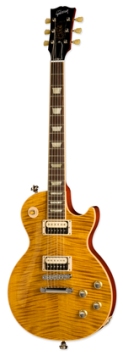 Last year, Omega released a special edition timepiece to commemorate the 40th anniversary of the Apollo astronauts voyage to the moon. In 1969, the men in the space capsule wore Omegas so the firm decided to recreate that bit of history with a contemporary product.
Last year, Omega released a special edition timepiece to commemorate the 40th anniversary of the Apollo astronauts voyage to the moon. In 1969, the men in the space capsule wore Omegas so the firm decided to recreate that bit of history with a contemporary product.
But what if Buzz Aldrin and Neil Armstrong hadn’t worn Omegas at all? What if they had worn copies? And Omega knew that the men weren’t checking their timepieces, but rather an off-brand in space all those years ago. Does the big historical release make sense?
What if Porsche released a recreation of the famous convertible that James Dean perished in, but in reality, he had been killed driving a kit car? What if Paul Newman didn’t really wear a Rolex, but the firm released a tribute to a knockoff on the famous actor’s wrist?
Guitar manufacturer Gibson is navigating similar waters with their decision to issue a recreation of a copy.
The firm has released a number of celebrity signature models over the last couple of years. Some of the instruments have proven to be very successful, while others (like the Buckethead model) have been a bit more questionable.
One of the undeniably successful ventures was collaboration with former Guns n’ Roses axe slinger Slash that produced several interesting models ranging from the couple-a-hundred-buck Epiphone to an aged-replica instrument that was an exact duplicate of the guitarist’s own instrument (all the way down to the scuffs and cigarette burns) that ran about ten grand.
Late last week, Gibson made a big splash by announcing the newest model, The Slash Appetite Les Paul. Branded as the “the axe that launched a thousand riffs,” the instrument is described as an exact recreation of the axe Slash wielded on 1988’s landmark Appetite for Destruction record, all the way down to the capacitors and the pots.
Weird thing is, Slash didn’t play a Gibson Les Paul on that record.
The comment gallery was all over the Gibson website when this news was released. As many others have pointed out, Slash in fact played a copy of a Les Paul on Appetite for Destruction. In Slash’s 2007 best-selling memoir (co-authored by Anthony Bozza), he writes, “It was made by the late Jim Foot, who owned Music Works in Redondo Beach. He made about fifty of those Les Paul replicas entirely by hand with no detail overlooked” (page 172). In other sources, a luthier named Chris Derrig is credited with creating the instrument. Regardless, it wasn’t Gibson.
All of this raises interesting questions about the psychology of collectors and the purchasing influence of a iconic association. True Slash fans know that his LP wasn’t a Gibson, so they’re not going to be fooled. They’ll judge the new Appetite model on it’s own merits. Or, they know it’s kind of a weird duck in the lineage perspective, but it’s got their beloved tone and they don’t care about anything else.
And what of the more general fans? It’s hard to accuse Gibson of trying to dupe consumers because surely if you’re going to plop down the $4,728 MSRP on the Appetite model, aren’t you going to do a little homework first? And if mom and dad are rich enough to spend 5k simply because Junior likes Slash’s top hat, then there’s not much hope for them.
And then when you start thinking about the fact that the Les Paul is, by very definition, a celebrity signature guitar and that now you’ve got signature versions of copied signature version and so forth, then your head might just explode. It all gets very meta.